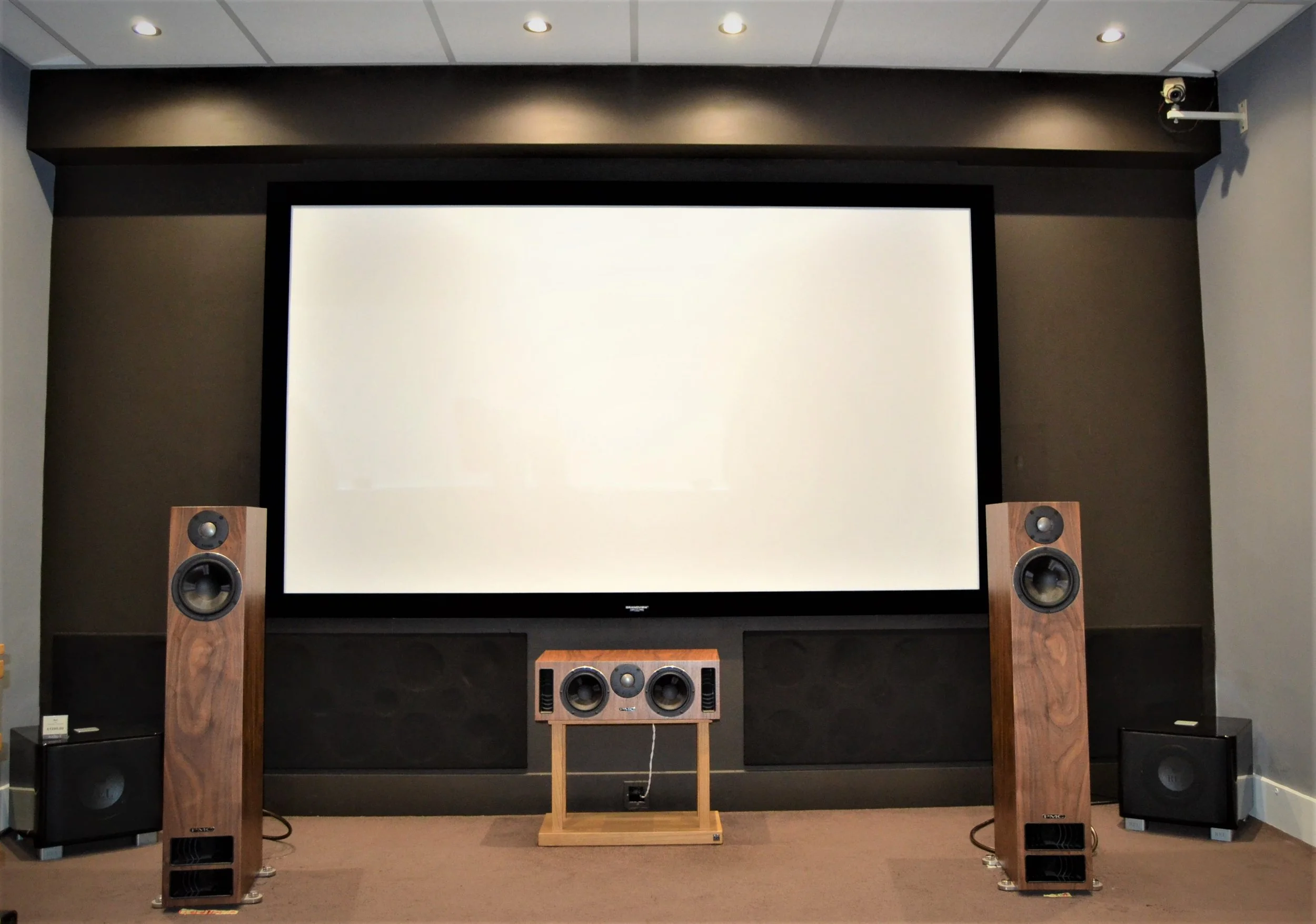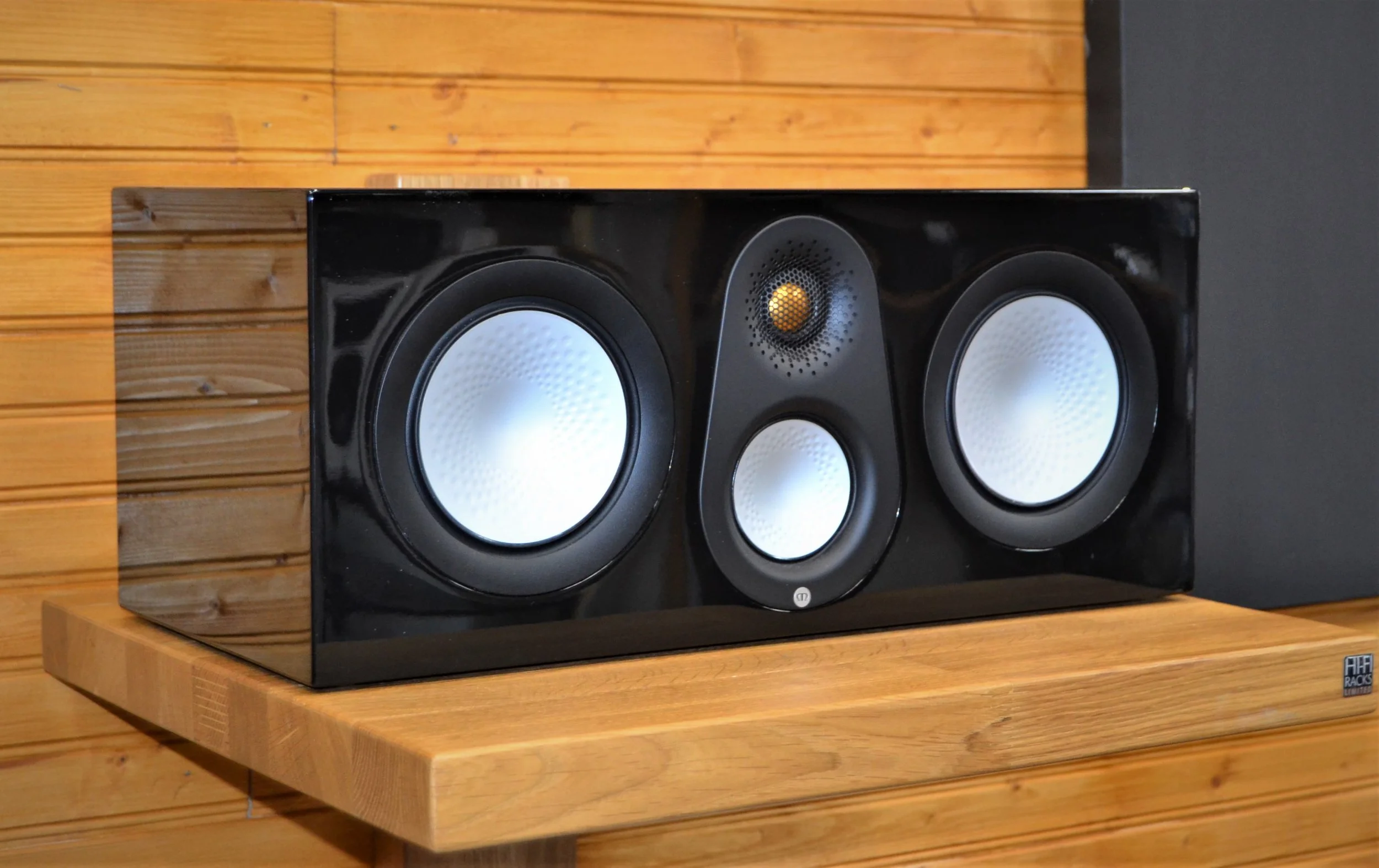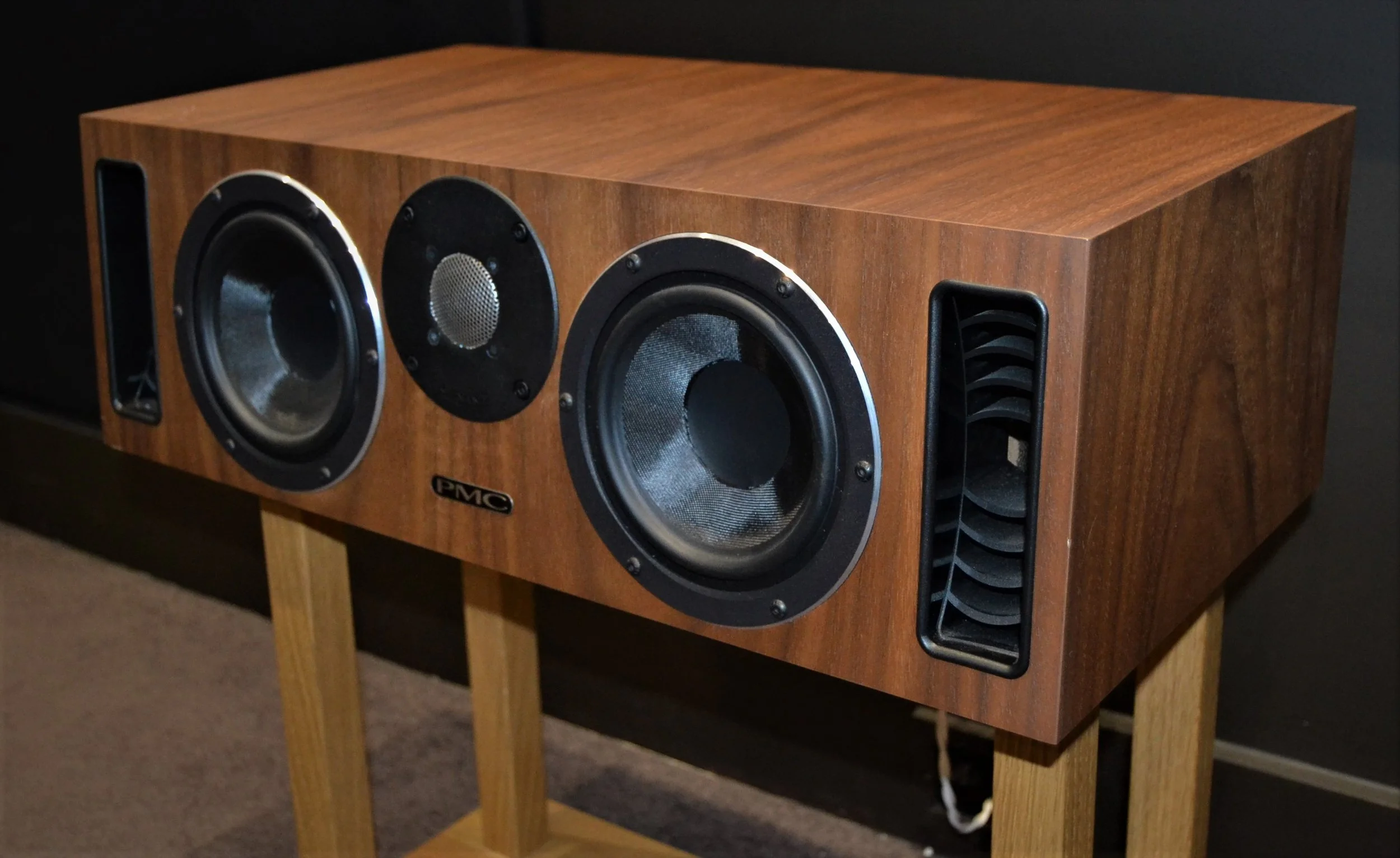The most important Surround Sound Speaker is...
/…right in front of you
Sounds from the back may be immersive, rumbles from the subwoofer may add drama, ATMOS and ceiling speakers may add ambience. But a large percentage of your movie sound is dialogue from your centre channel so it had better be good… But what makes a great centre speaker?
Clarity and Naturalness
Remember the controversy a few years ago surrounding the Poldark series on TV? Actors were accused of mumbling and making the plot hard to follow. Clarity is super important and if you’re struggling to understand what is being said you’re not going to relax and enjoy what you’re watching. Conversely, a small centre channel may fit into most TV cabinets but will often sound boxy and thin, this can also become tiring after a while.
Integration with the other speakers
It’s also important that the timbre is consistent across the stereo field. For example, footsteps walking from left to right should probably all sound the same, or maybe a plane whooshing across the screen.
In some bigger setups, the same model speaker is used for fronts, rears and centre channel, but few people have the space for such a setup at home.
Frequency Response
It’s tempting to think that frequency response isn’t too important in a centre channel, but a smaller speaker will struggle to reproduce deeper male voices with authority, and it’s difficult to take Darth Vader seriously if he sounds like he’s four feet tall.
While you can set a subwoofer to add low frequency oomph this can be difficult to integrate seamlessly. Some people even add a sub to each channel including centre, it’s maybe easier to use a larger speaker where possible.
Size and Layout
A large speaker may sound great but can be difficult to place under most people’s TVs, especially since many mainstream TV cabinets don’t allow a lot of space for a centre speaker.
In order to get the speaker under your TV most centre speakers use a D’Appolito layout: Two mid drivers with a tweeter in the middle, although often one of the mid drivers will be crossed over at a lower frequency to deliver bass. This results in a smaller unit but it can sometimes lead to dispersion problems for viewers sitting off centre.
The Monitor Audio 250 centre channels use a tweeter and small midrange arranged vertically to help alleviate dispersion problems for listeners not sitting directly in front of the screen. They have two larger drivers to fill out the lower midrange and bass, these frequencies are generally less sensitive off axis.
While many centre channels are ported at the back, Sonus Faber’s Lumina Centre i has ports at the bottom in common with their other Lumina bookshelf speakers. PMC’s Twenty5 C1 on the other hand have Transmission Line ports on the front in common with their other speakers. In theory at least, port position shouldn’t matter as low frequencies come from the port as a spherical pressure wave, but if your port is obstructed by your TV cabinet the speaker won’t sound as intended.
Aesthetics
In terms of looks, many people choose a centre channel with a finish that matches their main speakers, but maybe you’d prefer a black centre channel that doesn’t draw the eye away from the screen and stand out?
However, a possible downside of a non-matching colour speaker is that it may affect the resale value if you ever want to sell all the speakers as a set.
Some ideas to adjust the sound
Once placed in a TV cabinet some centre speakers can sound boxy and too bass heavy. Ideally you would want the speaker on a stand with no other objects nearby while keeping it as close to the screen as possible. Much easier if you are using a projector.
A larger more open hifi rack such as HiFi Racks 3 Tier Podium maybe the answer, or a dedicated centre speaker stand if you can mount your TV on the wall. Another alternative could be a wall mounted speaker such as Acoustic Energy AE105.
Many speakers are ported, so you could experiment with foam bungs to tune the bass.
Maybe try an isolation product like Sorbothane feet or isolation pucks from Iso Acoustics, this will help stop the TV stand acting as a sounding board.
To get more treble or clarity you could experiment with the angle of speaker. The tweeter is often lower than ear level, so tilting the speaker upwards slightly can help high frequencies reach your ears instead of your knees.
Many AV amplifiers allow you to EQ individual speakers to compensate for room acoustics and placement. Using room correction software such as Audyssey or Dirac will calculate the curves based on measurements taken with a microphone, and often allow you to tailor them to your tastes.
Finally, a different cable will change the sound, but often the centre channel is the shortest cable run of an AV system so don’t expect big changes.
In conclusion
It may be worth spending a bit more time listening and tweaking your centre channel, you might be surprised at the improvement in your movie enjoyment. If you’re considering a full set of surround sound speakers, maybe the quality of the centre channel should be a higher priority and not just an afterthought.
Why not try it for yourself. Give your local Audio T store a call to find out more information about the products listed, and if you’re just passing by, why not pop in and take a look at them too?
Thanks for reading!
Richard & John – Audio T Enfield
If you have any questions about any of the equipment featured in this article, or any other Hi-Fi or home cinema enquiries, be sure to Contact Us.
If you’ve enjoyed this, why not go ahead and read some more of our other blogs, and be sure to follow us on our social media channels below…
PMC can be found at the following Audio T stores
Monitor Audio can be found at the following Audio T stores
Hi-Fi Racks can be found at the following Audio T stores
Sonus faber can be found at the following Audio T stores
Acoustic Energy can be found at the following Audio T stores
*All prices, credit terms and interest rates quoted are correct at the time of going to press but may be subject to change. E&OE











